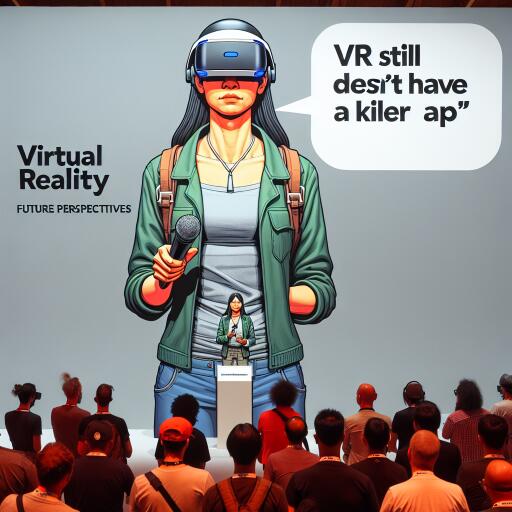Virtual Reality’s Elusive “Killer App”: Insights from an Xbox Co-Creator
In a candid discussion, Seamus Blackley, who played a pivotal role in developing the original Xbox console, expressed his thoughts on the state of Virtual Reality (VR) technology and its seeming inability to find a breakthrough “killer app” that could propel it into the mainstream. Despite the technological advances in both VR and AR (Augmented Reality), Blackley believes the industry has yet to identify that compelling application that would truly captivate widespread audiences.
During his participation in a gaming-focused podcast, Blackley shared his assertion that, “There is no killer app and nobody can put their finger on what a killer app could be.” His critique of current VR offerings centers on the experience feeling disjointed and underwhelming when users engage with what might otherwise seem like imaginative scenarios. Often, users find themselves eager to remove the headset, hindered by the discomfort of the physical device itself.
From a storytelling perspective, Blackley pinpointed a crucial issue facing VR: the paradox of offering freedom. While the promise of exploring expansive worlds sounds appealing, he argued that successful narratives require a degree of guided control to maintain engagement. Blackley described this balance as a necessity, saying: “We want a storyteller to control the narrative and to entertain us.”
The challenge VR faces is in providing this controlled narrative without stripping away the immersive potential that excites a certain niche of users who thrive on the freedom to disrupt the narrative structures.
Current VR Showcases: A Snapshot
Despite these challenges, the VR realm is not devoid of impressive achievements. “Horizon Call of the Mountain” emerged as a significant launch title for Sony’s PSVR2, showcasing what the technology can offer. Another notable title is “Half-Life Alyx,” which has garnered praise from those who experienced it, highlighting the potential of highly crafted VR adventures.
Games like “Synapse” exemplify the immersive qualities that VR can deliver, whereas “Beat Saber,” known for accessibility across various VR platforms, stands out as a potential frontrunner for what might be considered a “killer app” in the VR world.
The Road Ahead: Opportunities and Challenges
While these games demonstrate VR’s potential, the broader industry faces hurdles in creating sustainable enthusiasm. For example, Sony’s recent omissions relating to their PS VR2 during major events indicate a lack of ongoing strategic investment or development focus, which could dampen consumer interest.
Even highly anticipated potential titles face setbacks. For instance, the possibility of “Astro Bot” making a debut on PS VR2 was dismissed, leaving fans questioning the engagement trajectory for this platform. Blackley’s perspective suggests that without notable innovations or system-selling titles, the VR landscape may continue to struggle with adoption.
For VR to truly achieve its potential, there needs to be a shift towards meaningful and engaging content that resonates with a broader audience. A “killer app” must not only display the hardware capacities but seamlessly intertwine compelling narratives with interactive depth.
Until then, the quest for VR’s standout application continues, leaving the industry poised for its eventual evolution. With the right innovation and support, VR’s “killer app” might just be around the corner, waiting to redefine how we participate in digital experiences.









